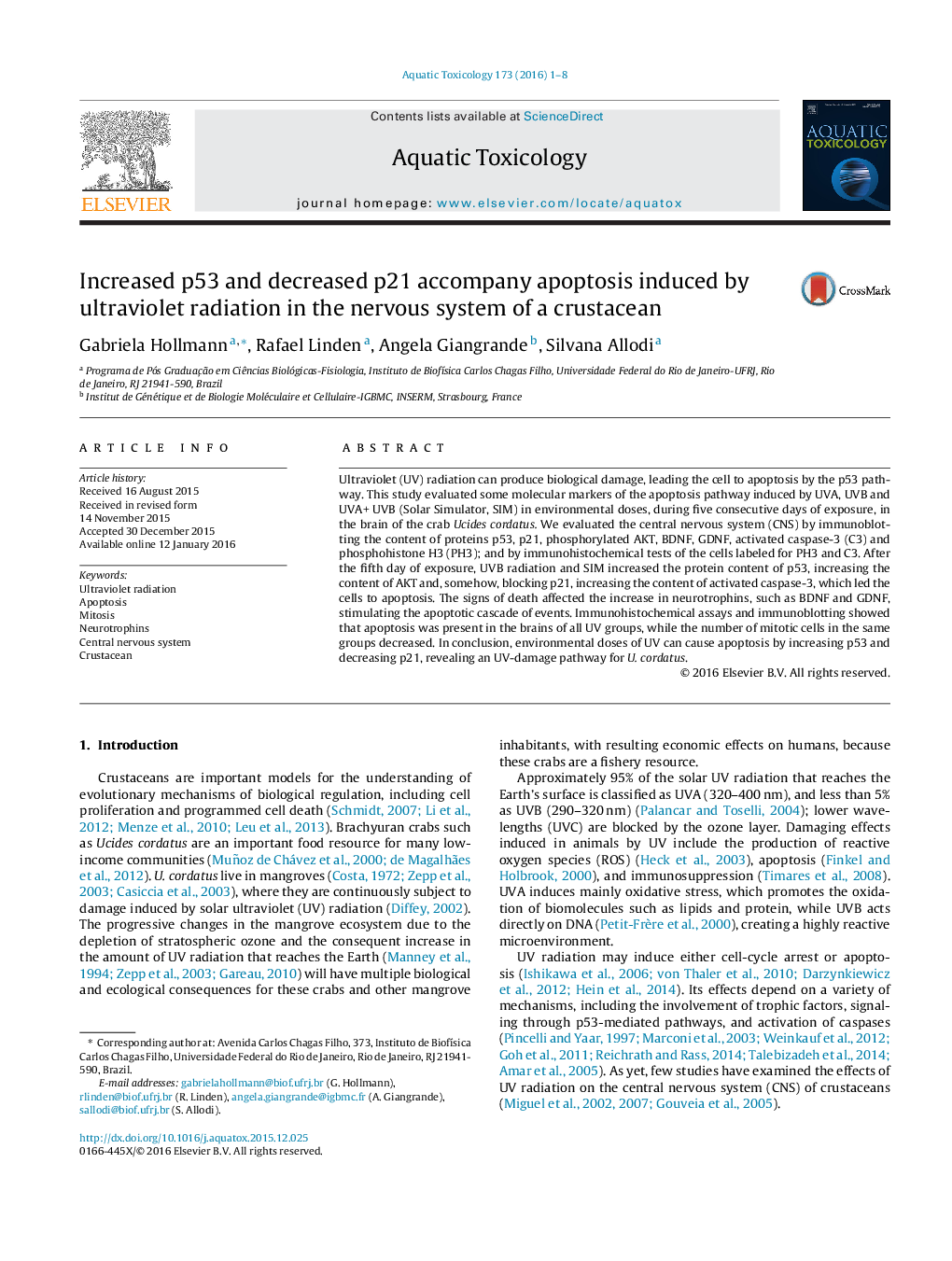| کد مقاله | کد نشریه | سال انتشار | مقاله انگلیسی | نسخه تمام متن |
|---|---|---|---|---|
| 4528860 | 1625932 | 2016 | 8 صفحه PDF | دانلود رایگان |

• The paper characterizes molecular pathways of cell responses to environmental doses of UV in brain tissue of a crab species.
• The UV radiation changes levels of proteins which trigger apoptotic or cell cycle arrest pathways and also it changes neurotrophins which lead to apoptosis of neural cell in the central nervous system (CNS) of the crab Ucides cordatus.
• The UVB wavelengths in the solar simulator damaged the DNA, either directly or indirectly, by increasing ROS, and induced the increase of p53 and AKT, which blocked p21 and increased the expression of activated caspase-3, triggering apoptosis. The signs of death increased the expression of neurotrophins (BDNF and GDNF), which continued to stimulate the apoptosis signaling mediated by caspase-3.
• In the brain of the crab U. cordatus, p53/p21 relationship in response to UV radiation is different from that of most mammals.
Ultraviolet (UV) radiation can produce biological damage, leading the cell to apoptosis by the p53 pathway. This study evaluated some molecular markers of the apoptosis pathway induced by UVA, UVB and UVA+ UVB (Solar Simulator, SIM) in environmental doses, during five consecutive days of exposure, in the brain of the crab Ucides cordatus. We evaluated the central nervous system (CNS) by immunoblotting the content of proteins p53, p21, phosphorylated AKT, BDNF, GDNF, activated caspase-3 (C3) and phosphohistone H3 (PH3); and by immunohistochemical tests of the cells labeled for PH3 and C3. After the fifth day of exposure, UVB radiation and SIM increased the protein content of p53, increasing the content of AKT and, somehow, blocking p21, increasing the content of activated caspase-3, which led the cells to apoptosis. The signs of death affected the increase in neurotrophins, such as BDNF and GDNF, stimulating the apoptotic cascade of events. Immunohistochemical assays and immunoblotting showed that apoptosis was present in the brains of all UV groups, while the number of mitotic cells in the same groups decreased. In conclusion, environmental doses of UV can cause apoptosis by increasing p53 and decreasing p21, revealing an UV-damage pathway for U. cordatus.
Journal: Aquatic Toxicology - Volume 173, April 2016, Pages 1–8